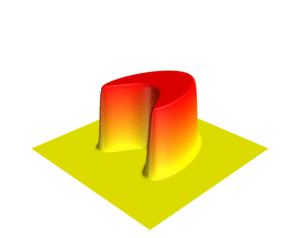Partial differential equation (nonfiction): Difference between revisions
No edit summary |
No edit summary |
||
| Line 31: | Line 31: | ||
* [http://www.eoht.info/page/History+of+differential+equations History of differential equations] | * [http://www.eoht.info/page/History+of+differential+equations History of differential equations] | ||
[[Category:Nonfiction (nonfiction)]] | [[Category:Nonfiction (nonfiction)]] | ||
[[Category:Mathematics (nonfiction)]] | [[Category:Mathematics (nonfiction)]] | ||
[[Category:Differential equations (nonfiction)]] | [[Category:Differential equations (nonfiction)]] | ||
Revision as of 20:55, 8 May 2019
In mathematics, a partial differential equation (PDE) is a differential equation that contains beforehand unknown multivariable functions and their partial derivatives. PDEs are used to formulate problems involving functions of several variables, and are either solved by hand, or used to create a computer model. A special case is ordinary differential equations (ODEs), which deal with functions of a single variable and their derivatives.
PDEs can be used to describe a wide variety of phenomena such as sound, heat, diffusion, electrostatics, electrodynamics, fluid dynamics, elasticity, or quantum mechanics. These seemingly distinct physical phenomena can be formalized similarly in terms of PDEs.
Just as ordinary differential equations often model one-dimensional dynamical systems, partial differential equations often model multidimensional systems.
PDEs find their generalization in stochastic partial differential equations.
In the News
Fiction cross-reference
Nonfiction cross-reference
- Differential equation (nonfiction) - a mathematical equation that relates some function with its derivatives. The functions usually represent physical quantities, the derivatives represent their rates of change, and the equation defines a relationship between the two.
- Mathematics (nonfiction)
- Physics (nonfiction)
External links:
